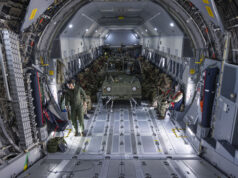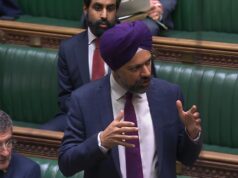Recent data from the Ministry of Defence has revealed a significant improvement in the average length of service among personnel in the Royal Navy, British Army, and Royal Air Force by 2024. This recovery follows a notable decline in service length observed around 2020.
The tables provided by Alistair Carns MP, Minister for Veterans and People, show the average number of months that service members, both officers and other ranks, spend in the Armed Forces before leaving. The data covers three key years: 2015, 2020, and 2024.
Table 1. Average Length of Service (Months) on Outflow from the Untrained & Trained Regular Navy by Officer / Other Rank and Calendar Year, 2015, 2020, 2024:
| Officer / Other Rank | 2015 | 2020 | 2024 |
|---|---|---|---|
| Officers Exits | 514 | 371 | 444 |
| Mean Length of Service | 213 | 209 | 218 |
| Median Length of Service | 192 | 188 | 221 |
| Other Rank Exits | 2,858 | 2,581 | 2,785 |
| Mean Length of Service | 116 | 97 | 121 |
| Median Length of Service | 83 | 58 | 81 |
Table 2. Average Length of Service (Months) on Outflow from the Untrained & Trained Regular Army by Officer / Other Rank and Calendar Year, 2015, 2020, 2024:
| Officer / Other Rank | 2015 | 2020 | 2024 |
| Officers Exits | 895 | 536 | 782 |
| Mean Length of Service | 192 | 182 | 191 |
| Median Length of Service | 160 | 156 | 165 |
| Other Rank Exits | 9,910 | 6,850 | 7,965 |
| Mean Length of Service | 99 | 90 | 109 |
| Median Length of Service | 72 | 56 | 77 |
Table 3. Average Length of Service (Months) on Outflow from the Untrained & Trained Regular RAF by Officer / Other Rank and Calendar Year, 2015, 2020, 2024:
| Officer / Other Rank | 2015 | 2020 | 2024 |
| Officers Exits | 592 | 395 | 447 |
| Mean Length of Service | 229 | 263 | 257 |
| Median Length of Service | 206 | 247 | 255 |
| Other Rank Exits | 2,225 | 1,753 | 2,076 |
| Mean Length of Service | 186 | 174 | 172 |
| Median Length of Service | 144 | 143 | 143 |
The Royal Navy has demonstrated a strong recovery in retention rates for both officers and other ranks. In 2020, the average length of service for officers dipped to 209 months from 213 months in 2015. However, by 2024, this figure rose to 218 months, reflecting a positive trend in keeping experienced personnel within the service.
For other ranks, the situation is even more pronounced. The average length of service dropped from 116 months in 2015 to 97 months in 2020, marking a challenging period for retention. By 2024, the length of service rebounded to 121 months, exceeding the 2015 level and indicating effective retention initiatives or changes within the Navy.
The British Army has similarly seen an improvement since 2020. Officer service length decreased from 192 months in 2015 to 182 months in 2020, but by 2024, it had nearly returned to the earlier level at 191 months. This suggests a recovery in maintaining officer numbers after a difficult period.
Among other ranks, the improvement is more substantial. In 2015, the average length of service was 99 months, dropping to 90 months in 2020. However, by 2024, it rose to 109 months, marking a significant positive change. The data implies successful efforts to address factors that led to the previous decline.
The RAF’s figures are more complex. Officers saw an increase in average service length from 229 months in 2015 to 263 months in 2020, before slightly decreasing to 257 months in 2024. This slight drop still leaves the figure notably higher than in 2015, indicating overall strong retention among officers despite the minor reduction.
However, the data for other ranks tells a different story. The average length of service fell consistently from 186 months in 2015 to 174 months in 2020 and further to 172 months in 2024. This ongoing decline highlights ongoing challenges in retaining non-officer personnel within the RAF. The Royal Navy and British Army have demonstrated that targeted retention initiatives can yield positive results, while the RAF may benefit from a similar focus, particularly concerning ‘other ranks’.
The data serves as a positive indicator that recent efforts to enhance personnel retention are paying off, for the Royal Navy and British Army, at least.














What was behind the fall and subsequent rebound?
Sorry, am I reading this data wrong? In Table 1 from 2020 to 2024, for example, the outflow has increased by 19% and those leaving have on average 9 months more experience? Is this a good thing?
hi
hi
hi
Morale has never been so low but they also know there are no jobs out there for them.
My brother is stuck as nobody will pay him a majors salary outside the service.
So I am currently helping a friend – Lt RN who is transitioning outside – with job hunting. It’s not nearly as grim as you are portraying. Also important to remember that the pay in the armed forces is generally very competitive (yes we would all like to be paid more!). Top whack major is on £77K, minus X-Factor @ £11.5K… so call it £65K for easy maths. UK Mean/Median in 2024 was £36800/£37400 respectively. So you are firmly into ‘double average income’ bracket as a top flight Major. But even still there are 200x civil service positions above £65K presently. There are 120x SO2 (Maj, Sqn Ldr, Lt Cdr) jobs on SERVE right now. Indeed has 900 jobs over £60K. There are jobs out there…
Is the increase in “retention” not because the exodus has largely already happened, so the numbers will begin to stabilise, but the seats are still empty?